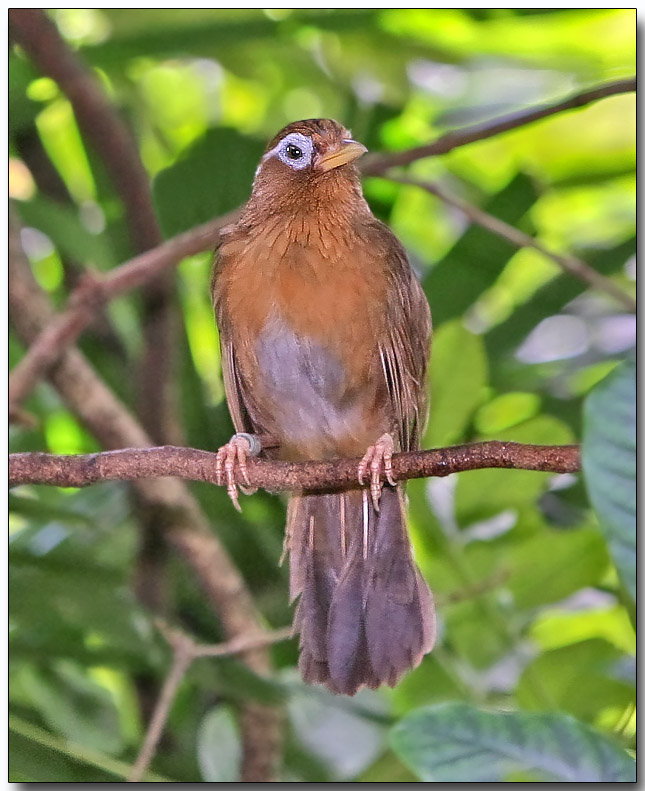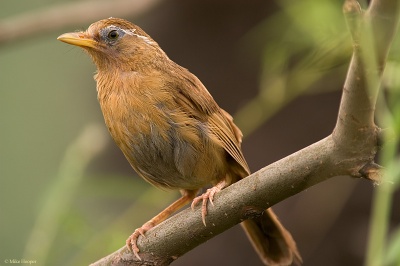
Garrulax canorus
SUBFAMILY
Timaliinae
TAXONOMY
Turdus canorus Linnaeus, 1758, Amoy. Three subspecies.
OTHER COMMON NAMES
English: Melodious jay thrush, spectacled thrush, Chinese
thrush; French: Garrulaxe hoamy; German: Augenbrauenhдherling.
PHYSICAL CHARACTERISTICS
9 in (22 cm). Thrush-shaped. Uniformly brown with fine darker
streaking. Distinctive white eye ring, with long rearwards extension
lending an “Egyptian” look. Bill pale. Taiwanese subspecies
more heavily streaked with much reduced eye ring.
DISTRIBUTION
Central and southeast China, Taiwan, Hainan, and northern
Indochina. Feral populations established on the Hawaiian Islands
of Oahu, Maui, Hawaii, Molokai, and Kaua’i.
HABITAT
Scrub, secondary forest, and nearby farmland.
BEHAVIOR
A notably shy bird, yet famous for male’s robust song. Stays
near the ground, a weak flyer. Usually in pairs or small groups.
FEEDING ECOLOGY AND DIET
Forages in leaf litter for insects, fruit, seeds, and insects.
REPRODUCTIVE BIOLOGY
Monogamous. Large bowl or oval-shaped nest situated in
thickets, made of leaves, pine needles, grasses, fine twigs, vines,
and other plant material. May or may not be lined. Three to
five bluish eggs, sometimes spotted. Female alone incubates for
15 days. Chicks fledge after 13 days of being fed by both parents.
Two breeds raised between February and September.
CONSERVATION STATUS
Not threatened, though Taiwanese G. canorus taewanus may be
threatened due to introduction of mainland nominate subspecies.
As disturbed and agricultural habitat is favored, still
quite common on Chinese mainland, despite massive exploitation
for the cage-bird trade. Added to Appendix II of CITES
in 2001.
SIGNIFICANCE TO HUMANS
Most revered songbird in China. Apparently inflicts limited
damage to peanut and pea crops in China, but negative presence
offset by insect control.
Other popular Animals
Photo Gallery of - Hwamei




 Animalia Life
Animalia Life